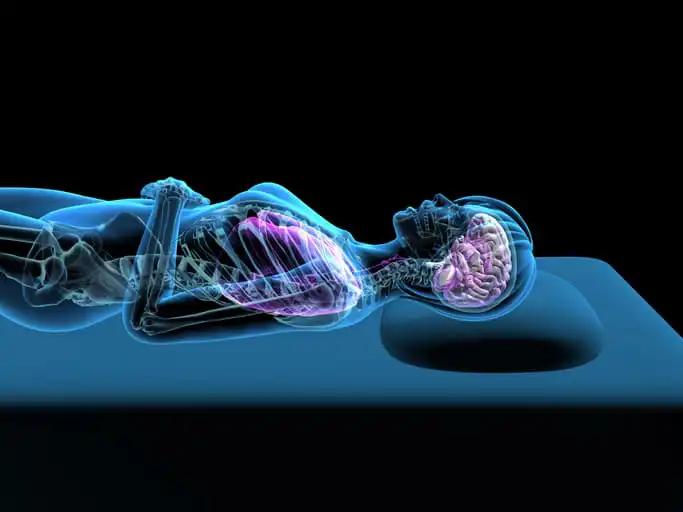KEY TAKEAWAYS
- Phase 2, ISG-STS 10-01, compared neoadjuvant EI with an HT regimen in STS, including MLPS.
- The primary aim was to assess the non-inferiority of the HT regimen compared to EI in terms of DFS
- The outcome showed that the HT neoadjuvant trabectedin was not inferior to EI in terms of DFS.
- Both arms showed better survival outcomes than predicted by Sarculator, a tool used to estimate the probability of survival.
- The median follow-up was 66 months, and 101 patients were enrolled, with 56 in the EI arm and 45 in the HT arm.
Some superiority of epirubicine+ifosfamide (EI) was seen across all histologies in a randomized trial comparing 3 cycles of neoadjuvant EI to a histology-tailored (HT) regimen in selected localized high-risk STS, except for Myxoid Liposarcoma (MLPS), where both EI and HT regimens appeared to be equally effective. This MLPS cohort was expanded so that the HT regimen could be compared to EI for its non-inferiority. This study compared EI to standard HT treatment and was conducted across multiple European sites.
Patients (pts) had undifferentiated pleomorphic sarcoma, leiomyosarcoma, malignant peripheral nerve sheath tumor, synovial sarcoma, or MLPS of the extremities or trunk wall that was locally advanced (grade = 3; size >5 cm; deeply seated). The main outcome measure was Time to Disease Free Survival (DFS). Overall Survival (OS) was the secondary outcome measure. Third interim analysis results (Lancet Oncol 2017; 18:812-22) expanded the MLPS cohort to test the null hypothesis that the HT regimen trabectedin is associated with an HR of relapse > 1.25 using a non-inferiority design. To this end, a Bayesian monitoring strategy was employed until the 80% or 5% threshold was reached, whichever came first.
About 101 patients with high-risk MLPS were randomized between May 2011 and June 2020, with 56 receiving EI and 45 receiving HT. The average time between visits was 66 months (IQ range 37-89). The IQ ranged from 84 to 143 on average in the HT arm, 108 mm (IQ range 86-150) in the EI arm, and 75 to 135 on average in the HT arm. The DFS and OS probabilities at 60 months were 0.86 and 0.73 in the HT and EI arms, respectively (HR:0.60; 95%CI: 0.24-1.46; log-rank p = 0.26 for DFS) and 0.88 and 0.90 (HR:1.20; 95%CI:0.37-3.93; log-rank p = 0.77) for OS. Survival rates at 5 years were 0.89 (95% CI 0.82-0.97) in all patients (p = 0.020), 0.90 (95% CI 0.81-1.00) in the EI arm (p = 0.049), and 0.88 (95% CI 0.77-1.00) in 0.81 the HT arm (p = 0.204).
Trabectedin, a neoadjuvant therapy for HT, was not inferior to EI in a larger group of patients with MLPS. Even though survival was better in the neoadjuvant arm than in the control arm, it remains unclear if this patient population would benefit from a neoadjuvant therapy as they had a lower Sarculator-predicted risk of death than the rest of the trial cohort.
Source: https://meetings.asco.org/abstracts-presentations/208036
Clinical Trial:https://clinicaltrials.gov/ct2/show/NCT01710176
Alessandro Gronchi, Emanuela Palmerini, Vittorio Quagliuolo, Javier Martin Broto, Antonio Lopez-Pousa, Giovanni Grignani, Antonella Brunello, Jean-Yves Blay, Robert Diaz Beveridge, Virginia Ferraresi, Iwona Lugowska, Sara Pizzamiglio, Paolo Verderio, Valeria Fontana, Davide Maria Donati, Elena Palassini, Silvia Stacchiotti, Rosalba Miceli, Angelo Paolo Dei Tos, Paolo Giovanni Casali/Neoadjuvant chemotherapy in high-risk soft tissue sarcomas: Results of the expanded cohort of myxoid liposarcoma of the randomized clinical trial from the Italian Sarcoma Group (ISG), the Spanish Sarcoma Group (GEIS), the French Sarcoma Group (FSG), and the Polish Sarcoma Group (PSG)/J Clin Oncol 40, 2022 (suppl 16; abstr 11508)
DOI10.1200/JCO.2022.40.16_suppl.11508



